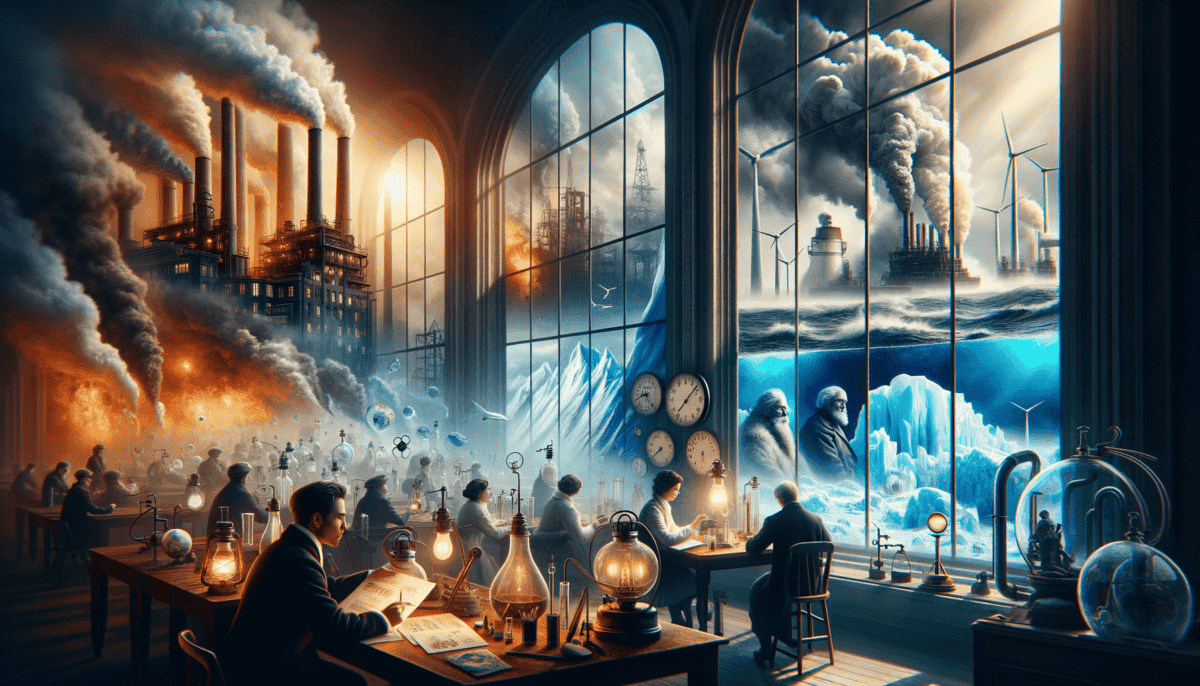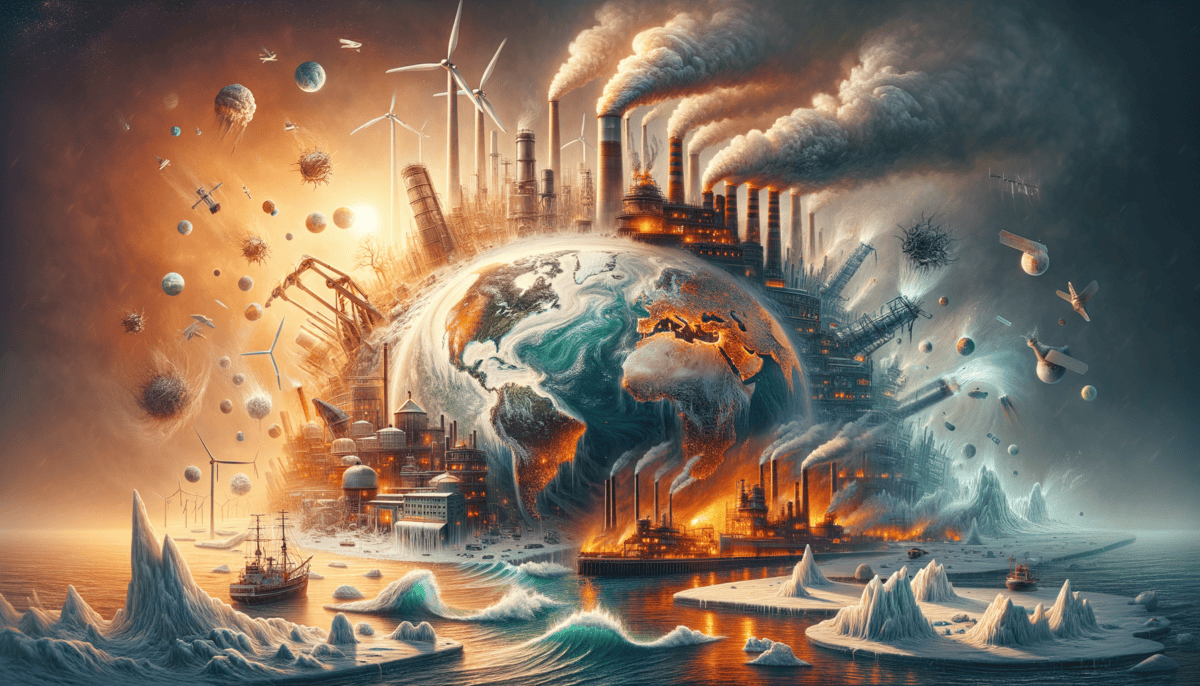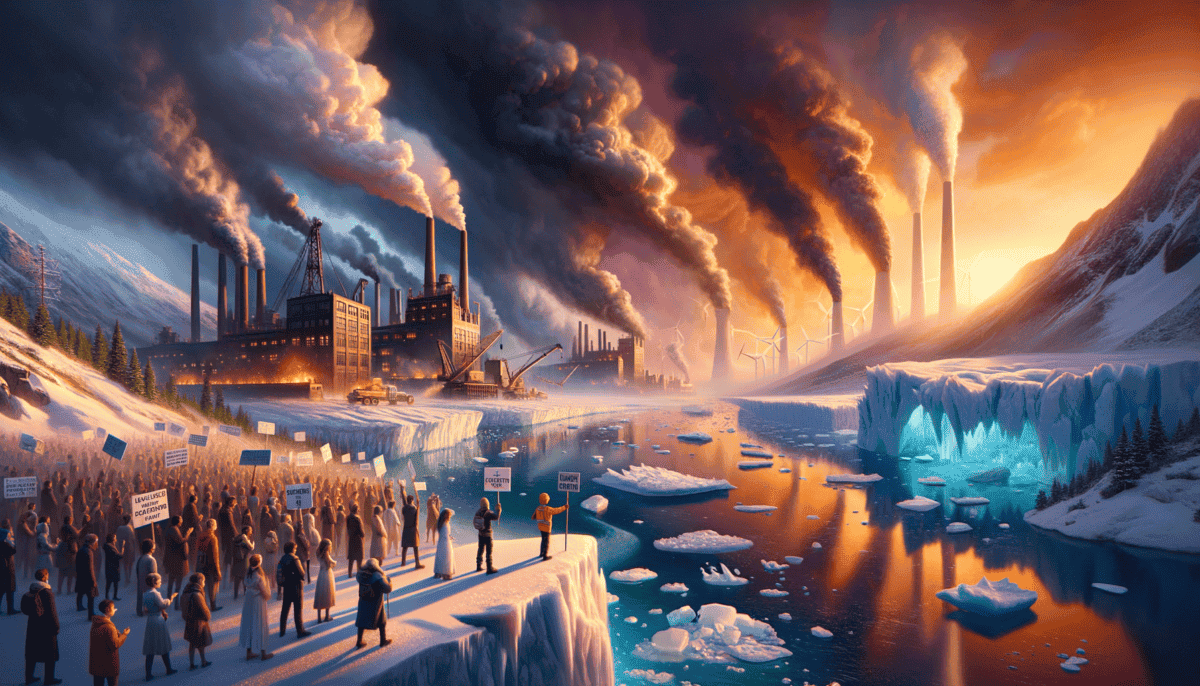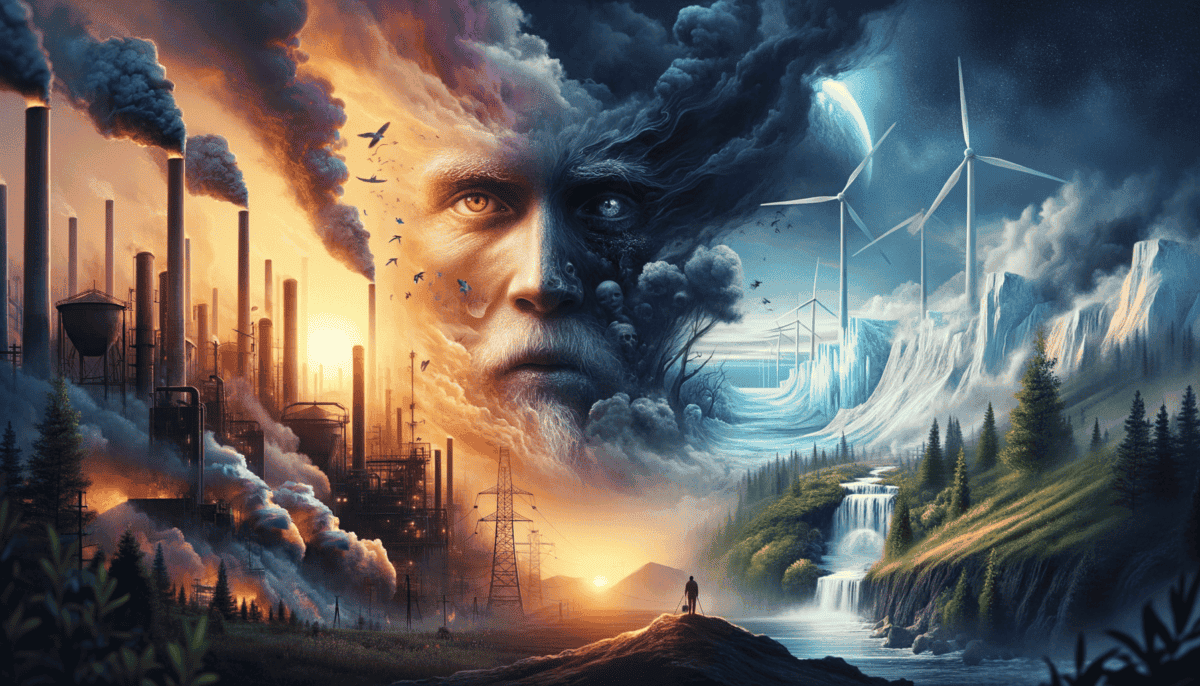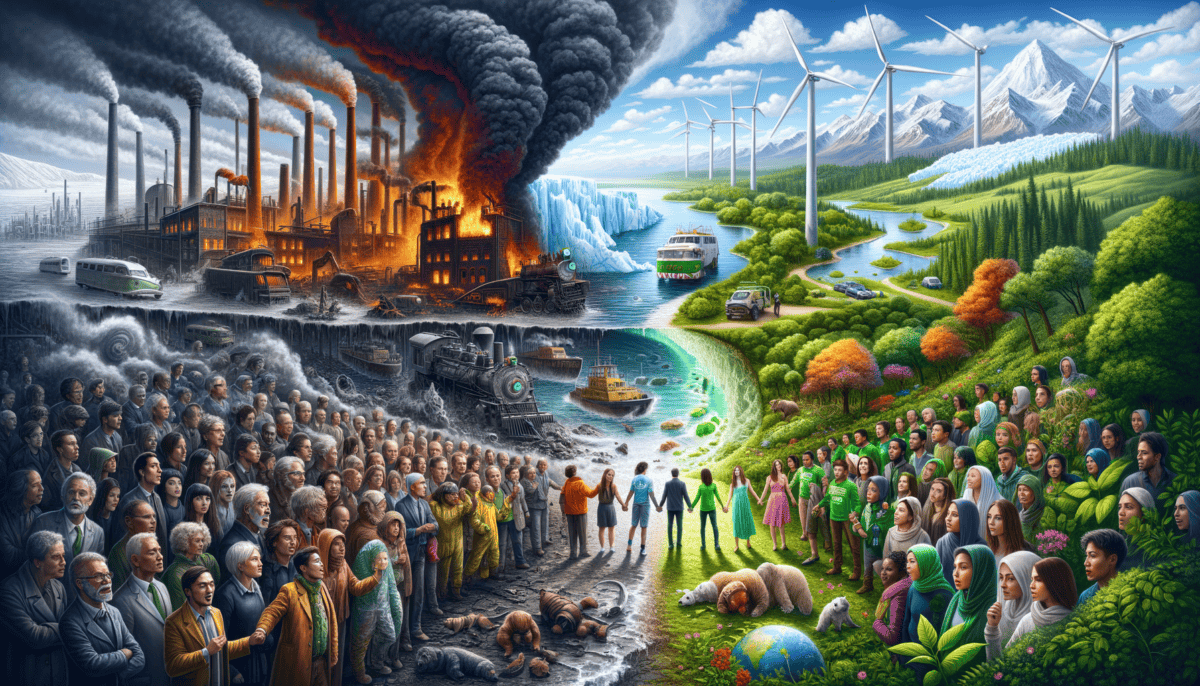A Time of Big Changes
Emma skipped along the cobblestone streets of Manchester, her small feet dodging puddles as smoke billowed from tall factory chimneys above. The year was 1789, and her world was changing faster than a butterfly emerging from its cocoon.
"Papa, why is the sky so gray today?" she asked, tugging at her father's worn coat sleeve as they walked to the textile mill where he worked.
Her father looked up at the thick clouds of smoke. "That's progress, dear one. Those machines are making our city grow bigger and stronger."
The New Age of Machines
Inside the factory, Emma watched in wonder as enormous machines spun cotton into thread. Her friend Thomas, a young inventor with bright eyes and messy hair, worked nearby.
"These machines are amazing!" Thomas exclaimed, his face glowing with excitement. "They can do the work of ten people in half the time!"
But Emma noticed something different about her city:
• The once-blue sky was often gray
• Trees were being cut down for factories
• The river water wasn’t as clear anymore
• More people were coughing from the smoke
Nature’s First Warning Signs
One spring morning, Emma and Thomas sat by the river where they used to catch fish. "The water looks different now," Emma said softly, poking a stick into the murky stream.
Thomas nodded. "All these new factories dump their waste here. Sometimes I wonder if we're changing things too fast."
The air grew thicker with each passing season. Trees that once lined the streets made way for brick buildings and iron machines. The world was transforming, but not everyone noticed how these changes were affecting the delicate balance of nature.
A Voice of Wisdom
Old Mrs. Baker, who lived next door to Emma, remembered when Manchester was surrounded by green fields. "The Earth speaks to us," she would say, rocking in her chair. "We just need to listen."
Emma looked at the factory smoke touching the clouds. "What is it saying, Mrs. Baker?"
"It's telling us to be careful, dear. Everything we do leaves a mark on our world."
Seeds of Understanding
Thomas spent his evenings sketching new inventions by candlelight. One night, Emma watched him draw a machine with tall smokestacks.
"What if we made machines that didn't make so much smoke?" she suggested.
Thomas paused, his pencil hovering over the paper. "You might be onto something, Emma. Maybe the future isn't just about building bigger machines. Maybe it's about building better ones."
As the sun set behind the factory chimneys, Emma and Thomas made a pact. They would try to understand how their changing world affected everything around them. The industrial age was just beginning, and with it came both amazing progress and important lessons about protecting our Earth.
“Sometimes the biggest changes start with the smallest questions,”
Emma wrote in her diary that night, as factory whistles echoed through the city streets.
The First Scientists Speak Up
The calendar showed 1896, and in a cozy laboratory in Stockholm, Sweden, a scientist named Svante Arrhenius was making an amazing discovery. He looked up from his papers with wide eyes.
"Maria! Come look at these numbers!" he called to his assistant. "The coal we burn changes the air around us!"
A Big Discovery
Maria hurried over, her notebook in hand. "What do you mean, Professor?"
"When we burn coal, it makes something called carbon dioxide. This gas acts like a blanket around Earth, keeping heat from escaping into space."
The air is like a blanket around Earth:
• It keeps us warm
• It can get too thick
• Burning coal makes it thicker
• A thicker blanket means a warmer Earth
People Start to Notice
In cities around the world, more people began to see changes. Little Sarah, who lived in London, wrote in her journal: "The snow doesn't stay as long as it used to. Grandma says winters were much colder when she was my age." ❄️
Meanwhile, in America, farmer John noticed something too. "The spring flowers bloom earlier every year," he told his children. "Nature's rhythm is changing."
The Warning Gets Louder
Professor Arrhenius shared his findings with other scientists. Some didn't believe him at first.
"But look at the evidence," he would say, showing them his careful calculations. "The more coal we burn, the warmer our world will become."
Like a quiet whisper growing into a loud voice, the message spread: humans were changing the Earth's temperature!
Young Voices Join In
In schools, curious children began asking questions:
"Teacher, why is the air so different from before?" asked one student.
"Can we do something to help?" wondered another.
"Knowledge is like a seed," Professor Arrhenius would say. "Plant it, and watch understanding grow."
A Growing Understanding
More scientists started studying these changes. They set up weather stations, measured temperatures, and watched how plants and animals responded to the warming world.
"We're like doctors," explained Dr. Emily Brooks to her young daughter. "But instead of checking on people, we're checking on the health of our whole planet."
The message was clear – the Earth was getting warmer, and people needed to know why. Scientists worked together, sharing their discoveries across oceans and continents.
As the sun set over Stockholm, Professor Arrhenius looked out his window at the factory smokestacks in the distance. He knew this was just the beginning of understanding how humans affect their world.
A World in Change
The warm summer breeze felt different in 1950. Young Tommy sat on his grandmother’s porch, fanning himself with a newspaper. ️
“Grandma, why is it so much hotter than last year?” Tommy asked, wiping sweat from his forehead.
Changes Everyone Can See
Grandma Rose looked up from her garden. The flowers were blooming earlier than ever before. “The world is changing, dear. Even my roses know it.”
• Hotter summers
• Shorter winters
• More big storms
• Rising ocean waters
The Big Heat Wave
In cities across the world, people noticed the heat getting stronger. Little Maria in Mexico wrote in her school journal: “The ice cream man comes more often now. Mama says it’s because the summers are longer than before.”
Mr. Johnson, the local weather man, appeared on TV with serious news. “This year is the hottest we’ve ever recorded. The thermometer keeps climbing higher and higher!”
Nature Sends Messages
Animals started changing their habits too. Billy, a young bird watcher, noticed something strange.
“Dad, the birds are coming back from their winter trips earlier,” he said, pointing to his bird chart. “And some don’t even leave anymore!”
“Nature always tells us when something’s different,” Dad explained. “We just need to listen.”
The World Wakes Up
People everywhere began talking about these changes. Scientists worked harder than ever to understand what was happening.
Like pieces of a puzzle coming together, they saw how burning fuels, cutting forests, and building cities all made the Earth warmer.
New Groups Take Action
In 1970, something exciting happened. People started forming groups to help protect the Earth. Kids and grown-ups joined together.
“We can make a difference!” Sarah told her classmates during show-and-tell. “My family started recycling and planting trees!”
Weather Gets Wild
The weather began doing strange things. Sometimes it rained so hard that streets turned into rivers. Other times, no rain fell for months. ⛈️
“It’s like the weather can’t make up its mind,” Tommy’s teacher explained to the class. “These big changes happen because our Earth’s blanket of air is getting too thick.”
At the science museum, Dr. Chang showed visitors a special display. “See this globe? The red spots show where it’s getting warmer. There are more red spots every year.”
As Tommy walked home that evening, he looked at the sunset through the city haze. He wondered what other changes tomorrow would bring. But he wasn’t scared – he was ready to help make things better.
Earth’s Warning Signs
Maya peered through the window of her science classroom, watching icebergs float by on the smart board. Her teacher, Ms. Chen, pointed to the melting ice.
The Big Melt
“Look how our Earth’s ice caps are changing,” Ms. Chen said. “They’re like giant ice cubes melting in the sun.”
The whole class gasped as they watched videos of huge chunks of ice falling into the ocean.
• Arctic ice is melting faster than ever
• Sea levels are rising
• Animals like polar bears need ice to live
• Many glaciers are disappearing
Young Voices Rise
After class, Maya couldn’t stop thinking about the melting ice. She talked to her best friend Carlos during lunch.
“We need to do something!” Maya declared, standing up from her lunch table.
“But what can kids like us do?” Carlos asked.
“Even small actions can make big changes,” Maya smiled. “Remember what Ms. Chen said?”
The School Rally
Maya and Carlos started a climate club at school. More and more kids joined every week. They made posters and sang songs about saving the Earth.
Soon, their little club grew into something bigger. Other schools wanted to join too!
Scientists at Work
Dr. Sarah Winter worked at the North Pole, studying the ice. She shared her findings with Maya’s class through a video call. ❄️
“The ice here tells us stories about Earth’s past,” Dr. Winter explained. “And right now, it’s telling us we need to help our planet.”
Signs of Hope
Maya learned that all around the world, people were working to help the Earth. Kids planted trees, families used less electricity, and scientists invented new ways to make clean energy.
“Look!” Carlos pointed to his tablet. “There’s a huge march happening in New York. Kids just like us are speaking up!”
Time to Act
That evening, Maya sat with her parents at dinner. “Today we learned about tipping points,” she said. “It means we need to act now to help our Earth.”
Her mom smiled. “What should we do first?”
“I have some ideas,” Maya grinned, pulling out her notebook filled with plans.
Outside, the sun set on another warm day. Maya knew there was much work to do, but she felt strong knowing she wasn’t alone. All around the world, people were joining together to help our Earth heal.
Green Heroes Rise
The sun peeked through solar panels on top of Maya’s school. She smiled, remembering when her climate club helped get them installed.
Bright Ideas
“Look what I found!” Carlos rushed up to Maya, holding his tablet. “Scientists made super-smart windows that make their own power!”
Ms. Chen walked over. “That’s right! It’s called solar glass. Want to see how it works?”
• Solar panels that float on water
• Cars that run on sunshine
• Houses made from recycled materials
• Wind turbines that look like trees
The Green Dream Team
Maya met Sarah, a young inventor who created special batteries that store sun power. “I was just like you,” Sarah told the class. “I wanted to help Earth, so I started inventing!”
“Can you show us how to make things too?” Maya asked excitedly.
“Of course! Everyone can be an inventor when they care about helping our planet.”
Working Together
The climate club started a maker space in their school library. Kids from all grades came to build and create.
“Look at my wind spinner!” shouted Tommy from first grade.
“And my recycled robot!” added Lisa from fourth grade.
Global Green Team
Through video calls, Maya’s class talked to kids around the world. They met Maria in Brazil, who planted trees in her city. And Kai in Japan showed them his school’s rooftop garden.
“We’re all Earth’s helpers!” Maya declared during their global show-and-tell.
Nature’s New Friends
The school installed bird feeders made from recycled bottles. Soon, colorful birds visited every day.
“The birds are telling their friends about our eco-friendly school,” Carlos joked.
Ms. Chen laughed. “Actually, you’re right! Animals notice when we take care of their home.”
Power of Change
Maya’s dad drove her to school in their new electric car. It hummed quietly, unlike their old noisy one.
“Remember when you first learned about climate change?” her dad asked.
“Yeah! And now look – we’re part of the solution!”
The school’s solar panels gleamed in the morning light. Inside, kids worked on new projects to help Earth. Maya felt proud knowing that all around the world, more people joined the fight against climate change every day.
She opened her notebook, ready to write down more ideas. The future looked bright – powered by sunshine, teamwork, and hope. ✨
Tomorrow’s Promise
Maya stood at her bedroom window, watching the sunrise paint the sky in beautiful colors. Her solar-powered alarm clock blinked 7:00 AM.
Dreams of Tomorrow
“Mom!” Maya called out excitedly. “Look what my garden buddy sent me!” She showed her tablet, displaying pictures of tiny sprouts pushing through soil in Australia.
• Growing food in cities
• Cleaning oceans with new machines
• Making buildings that help nature
• Finding ways to remove pollution
The Big Ideas Fair
At school, Maya and her friends set up their “Future Earth” fair. Kids from every grade brought their ideas to share.
“Welcome to tomorrow!” Maya announced to the visiting families. “We’re showing what our Earth could look like if we all work together.”
“I designed a playground that makes power when kids play!” shared Emma, pointing to her colorful drawing.
Nature’s Return
Carlos rushed in with amazing news. “The birds are back! Remember those pictures of empty nests from last year? Now there are baby birds everywhere!”
Ms. Chen smiled. “That’s what happens when we help nature – it comes back stronger.”
Growing Hope
The school’s rooftop garden bloomed with flowers and vegetables. Butterflies danced between the plants while solar panels hummed quietly nearby.
“Our school is like a tiny piece of the future,” Maya said to her little brother Tommy. “Want to help me water the tomatoes?”
The World Wakes Up
On the classroom’s big screen, Maya and her friends watched news from around the world. Cities were getting cleaner. More animals were coming back. People everywhere were working together to help Earth heal.
“Every day, more people join our team,” Ms. Chen explained. “That’s how we make big changes – one person at a time.”
A Letter to Tomorrow
Maya wrote in her journal: “Dear Future, we’re working hard to make you beautiful. We’re planting trees, cleaning water, and using Earth’s natural power. We’re learning and teaching others. Most importantly, we’re not giving up.” ✨
She looked out at her school’s green roof, where flowers swayed in the clean breeze. Solar panels sparkled in the sunlight. Birds sang in the garden. This was just the beginning.
Maya knew that all over Earth, millions of people were joining the fight to save our planet. Young inventors created new solutions. Scientists found better ways to help nature. Children learned to take care of their world.
The future wasn’t just a dream anymore – it was growing stronger every day, like the tiny seeds in Maya’s garden. And just like those seeds, with love and care, it would bloom into something beautiful.
Maya closed her journal and smiled. Tomorrow was full of promise, and she was ready to help make it shine. Together, they were writing Earth’s next chapter – and it was going to be amazing.


